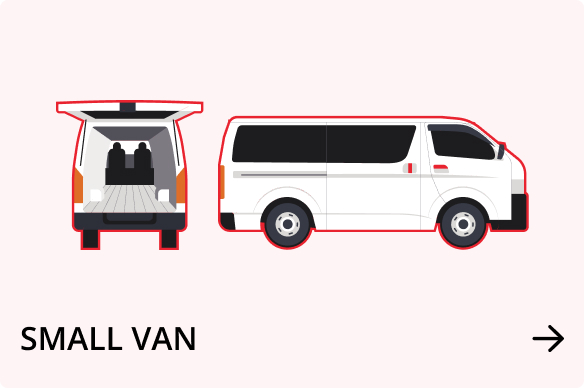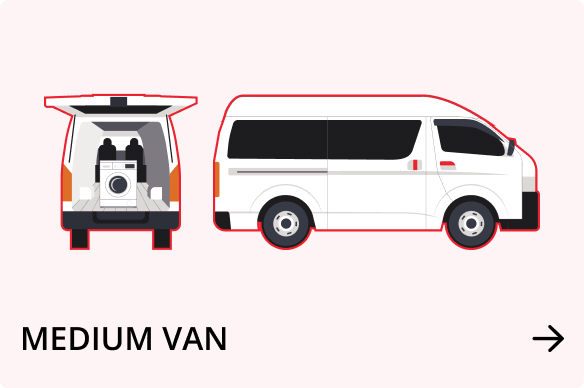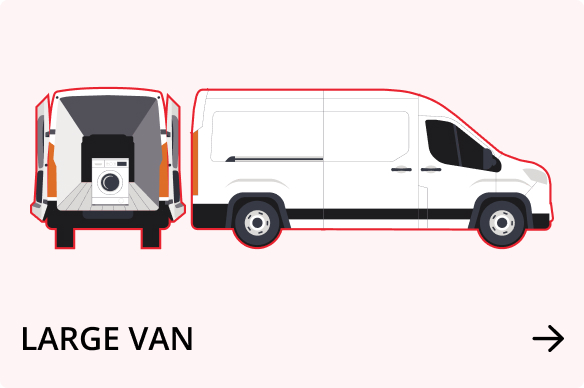The Ultimate Guide for Moving in NZ
Everything you need to plan, pack and move – with tips on choosing the right van or truck, protecting your stuff, and booking with Handy Rentals.
TL;DR: Start planning early, declutter, choose the right vehicle for your load (Handy’s fleet ranges from small vans to XXL trucks with tail lifters and reversing cameras), protect the move with the right cover, and use handy payment options like Afterpay to split the cost. Book online at Handy and get local Kiwi support across major centres.
1) Timeline – when to start planning
Aim to start planning 6–8 weeks before moving day for a stress-free move. Early tasks: confirm new lease/settlement date, book time off work, research vehicle options, and gather packing supplies. If you’re hiring help or a large truck, book early – weekends and month-ends fill up fast. Many NZ moving checklists advise the same step-by-step approach to avoid last-minute problems.
8 weeks out
- Decide whether you’ll DIY or hire movers
- Start decluttering and selling/donating unwanted items
4 weeks out
- Order boxes/crates, confirm the truck/van size and book it
- Notify schools, utilities and banks of your move (see section 9)
1–2 weeks out
- Pack non-essentials, organise moving day helpers and confirm access/parking at both properties
Moving week
- Pack an “open-first” essentials box (papers, toiletries, kettle, chargers) and do final meter readings.
2) Declutter & inventory – save time and money
Moving is the perfect excuse to downsize. Create three piles: keep / sell/donate / recycle. A smaller load means a smaller vehicle or fewer hours – real savings. Consumer NZ recommends keeping an inventory (photos + values) of important items in case you need to make a claim.
Pro tip: Photograph or video-pack items of high value (electronics, art, antiques) and note serial numbers.
3) Packing smart – supplies, crates and fragile items
Good packing prevents breakages and speeds unpacking.
Essentials
- Sturdy boxes (or hire reusable moving crates from Handy) for fragile glassware and plates.
- Bubble wrap/packing paper and tape (invest in a tape gun)
- Blankets, straps and a trolley for heavy furniture
Packing order
- Pack rarely-used rooms first
- Label boxes clearly with room + content + “OPEN FIRST” for essentials
- Keep a small toolkit and socket set handy for disassembling furniture
4) Choosing the right vehicle – van vs truck and what size to hire
Choosing the correct vehicle is the single most important decision in a DIY move. Handy Rentals has a full fleet across NZ (from small cargo vans to XXL trucks you can still drive on a standard car licence), and sizes are listed so you can match the vehicle to the job. Check location pages for local stock and size guides.
Rough size guide
- Small cargo van (5–6 m³) – great for a room or student move; starts from around $79/day (indicative).
- Medium truck (13–16 m³) – suitable for a 2-bedroom flat/house. Many medium trucks are late-model, easy-to-drive automatics with reversing cameras.
- Large / XL / XXL trucks (17–29 m³) – best for family house moves; many can include tail lifters for heavy whiteware and furniture.

How to choose
- Make a list of large items (fridge, bed, couch) and check vehicle cargo dimensions on the Handy site
- If you’re unsure, book a slightly bigger size – you’ll avoid multiple trips
5) Handy vehicle features that actually make moving easier
Modern features reduce strain, risk and stress.
- Tail lifters (tail lifts): Great for heavy whiteware or bulky furniture – they reduce manual lifting and speed loading/unloading. Handy’s truck fleet often offers tail lifters as an option.
- Reversing cameras: Make reversing and parking a lot safer-especially in tight driveways or city streets. Many Handy trucks come fitted with reversing cameras.
- Automatic transmission: Easier if you’re not used to shifting heavy vehicles – Handy’s fleet includes automatic options for many trucks.
- Free additional drivers: Handy often allows additional drivers – useful for sharing long drives and reducing fatigue (check the booking page for driver age and licence conditions).
These features cut time, reduce risk of injury and can save money by getting the job done in fewer hours.
6) How to book, and how Afterpay works with Handy Rentals
Booking with Handy is straightforward – pick your location, dates and vehicle, add extras and protect the booking with the options you need. Handy now accepts Afterpay so you can book now and pay later in four interest-free instalments. The process and steps are explained on Handy’s Afterpay page (enter promo code AFTERPAY when prompted). Handy also notes your card won’t be charged for the hire until the bond is taken (bond is charged 24 hours before hire).
Quick booking steps (summary)
- Choose pickup/drop-off location + hire dates
- Select vehicle category and exact vehicle
- Enter promo code AFTERPAY when prompted (if using Afterpay)
- Choose extras, fill in driver details and enter card details via the secure vault (bond charged 24 hours before).
Booking links
- Book online: Handy’s booking portal. booking.handy.co.nz
- Afterpay details and step-by-step guide at Handy’s Afterpay page.
7) Insurance & protection – what to know
Handy includes vehicle cover in the hire cost with a standard excess, and offers excess-reduction options so you can lower or remove your financial liability. Read the protections page carefully and choose the option that suits your comfort with risk (No Worries, Less Stress, At Your Own Risk). Handy explains how excess works in a clear blog post.
Practical tips
- Photograph existing vehicle damage at pickup and return paperwork – this avoids disputes
- Handy does not cover personal contents – get your own home contents insurance if you’re worried about damage/theft
- Consider an excess reduction option if you’re not confident driving a larger vehicle

8) Moving day checklist & loading order
Before you leave
- Double-check booking time, parking access, and permits if you need kerbside parking or a temporary no-parking sign.
- Bring straps, moving blankets and a trolley.
Loading order (pro tip from professional loaders & Handy’s pack guides)
- Load large, heavy items first (beds and fridges) against the front wall for weight distribution.
- Place whiteware centrally and secure with straps. If you have a tail lifter, use it to lower back-breaking lifts.
- Fill gaps with boxes and soft items (mattresses, cushions) to stop shifting
- Keep an “open-first” box in the cab with essentials
Driving tips
- Take it slow: trucks take longer to stop and turn
- Use reversing cameras and a spotter when available – they make tight manoeuvres safer.
9) After the move – change your address & admin checklist
After you’re in, update essential services to avoid missed mail and bills. NZ Post’s Change My Details service is the fastest way to notify many organisations. Also update IRD, NZTA and banks as needed. Consumer NZ suggests doing a meter reading, checking insurance and confirming utilities are connected.
Priority list
- NZ Post address change
- Banks and credit cards
- IRD (myIR) / tax records
- NZTA (driver licence and vehicle details)
- Utilities, insurance, subscriptions and schools

10) Quick FAQs
Q: What size truck should I hire for a 2-bedroom move?
A: A medium truck (about 13–16 m³) is usually enough for a 2-bedroom flat – Handy’s medium trucks fit this role and are described on their site.
Q: Does Handy take Afterpay?
A: Yes – Handy now accepts Afterpay and explains the booking flow on its Afterpay pages. Use promo code AFTERPAY when prompted.
Q: Are tail lifters worth it?
A: Yes if you have heavy whiteware or bulky furniture – they cut manual lifting and speed loading/unloading. Handy offers tail lifters as an option on many truck sizes.
Q: Do I need extra insurance?
A: Handy includes standard vehicle coverage with a prescribed excess; you can choose excess reduction for lower liability. Handy’s protections page explains your options.




